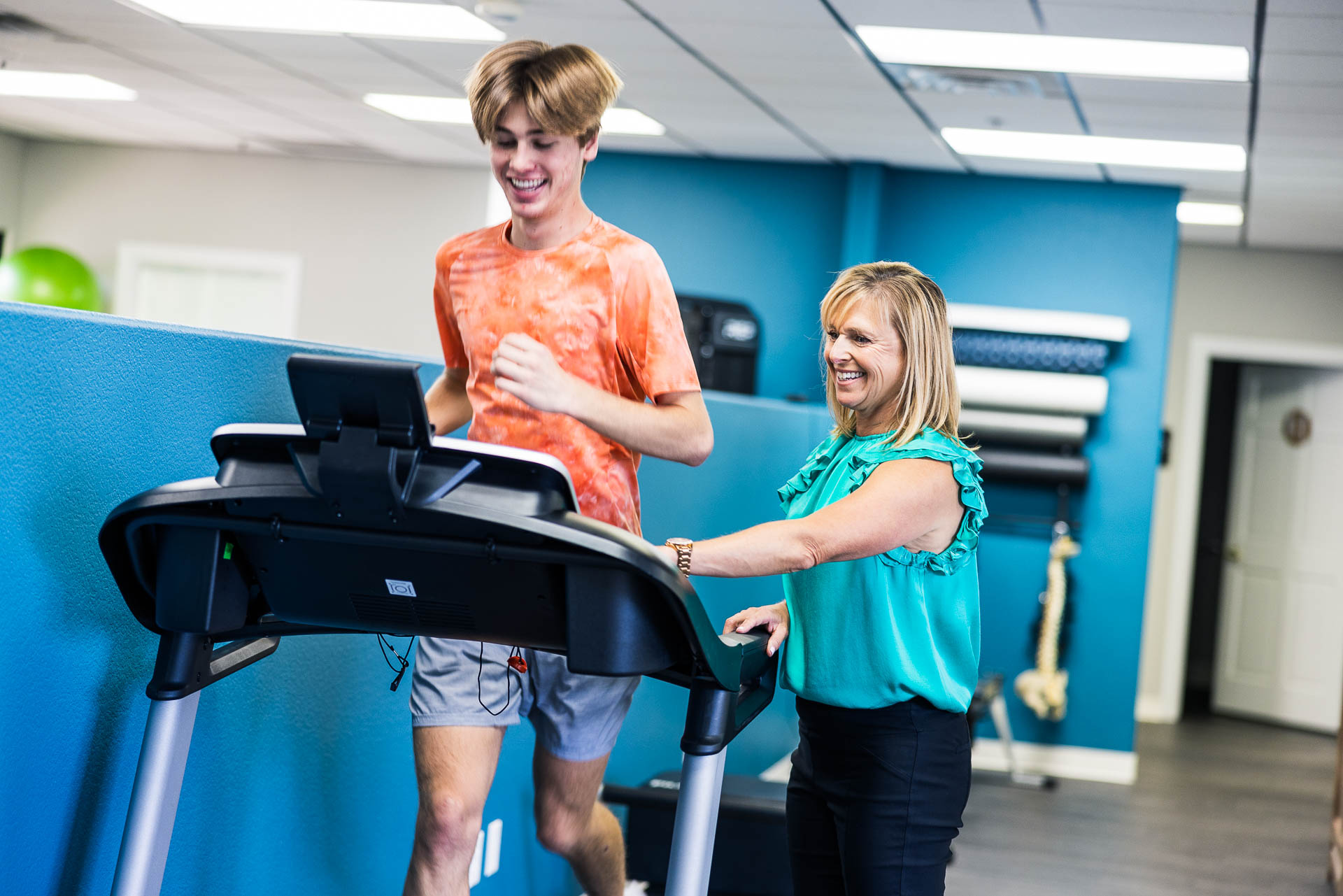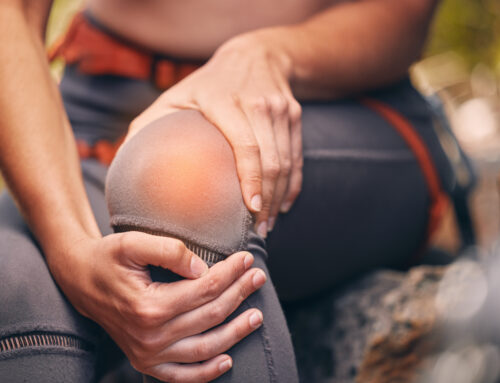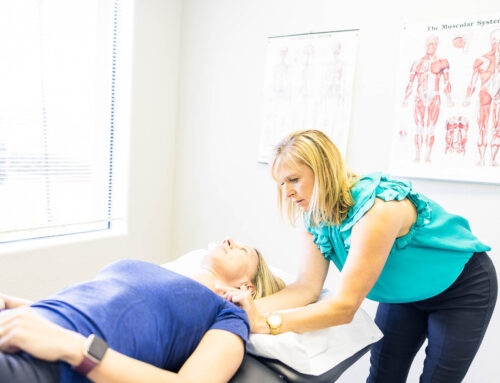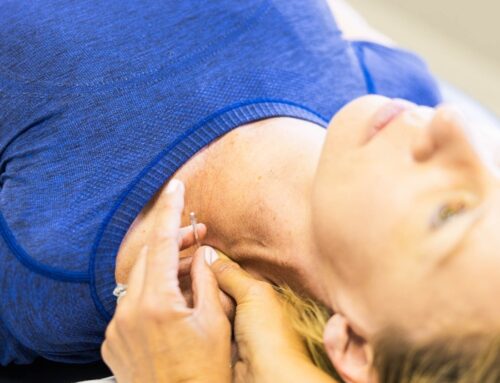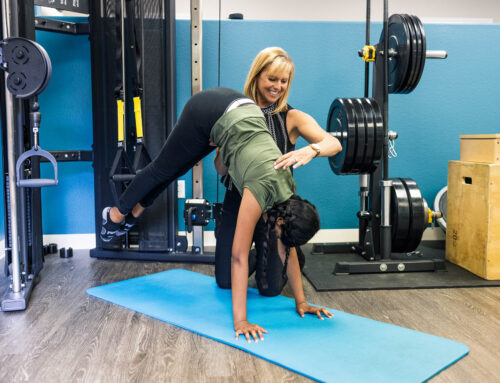When to Rest, When to Push, How to Round Out, And What You Wish You Knew
All moms want what’s best for their kid. We all worry if they are happy, if they are getting enough sleep, if they are eating healthy during the day, if they are doing well in school, if they have good friends… the list goes on. But for moms with student athletes, that diligence becomes even more layered because it is tied to something their kid loves: their sport. All those things – sleep and rest, nutrition, grades, teammates – have to fall into place to ensure a healthy, happy kid.
One of the best things we can do as parents and coaches is to share key learnings so that the next class of athletes and their families can have a head start. That’s why we asked some of the moms of student athletes we have worked with at Battle Born Health to answer a few questions about their kid’s journey in high school athletics. What worked; what didn’t; when rest and recovery was crucial; and when was it time to push.
If you are a mom with an incoming Freshman athlete, we hope that these lived experiences and tips from physical therapists who work with student athletes helps you and your kiddo have a successful four years enjoying their sport.
Rest and Recovery
Most high school sports are daily, and most sports focus on volume of training – this can be very intense for kids. It is easy to fall into over-training, which will lead to injury. Watch your kids and make sure they are not going from 6:30am to 11:30pm. Teach them the importance of Recovery, which includes:
- Sleep: A minimum of 8 hours per night (these kids are still growing and they need sleep!)
- Nutrition: Make sure they are eating enough nutrients. It’s not about calories, it’s about nutrients – that means a balance of veggies, protein, good fats, vitamins and minerals.
- Rest Days: Advocate for more rest, or a modified training program, especially if you are noticing signs of fatigue (cranky, changes in mood, changes or loss of menstrual cycle) or your child is injured or complaining of pain.
The coaches are focused on the team gaining techniques and fitness levels to win, but your child may need to progress differently. Work with a physical therapist or a coach who can work with your kid to make an appropriate plan to get back to 100%.
Here is what some of the moms had to say when we asked, “Tell us about a time when rest and recovery was crucial to your child’s performance?”
Sport: Track and Field
Very early on in High School, Kyle decided that he wanted to approach college coaches with fast times on what would be considered low weekly mileage. Kyle felt this would show Coaches that he had a lot of room for growth. Eric followed suit and this ended up being a brilliant strategy. By default, less miles meant more rest and recovery.
Kyle & Eric were lucky to have a juniors coach who taught them to train smarter, not harder. Their high school coach also focused on less miles and made sure they took time off between seasons. There were actually times when they chose not to run big national post-season races because they knew their bodies needed rest.
You can’t race when you are injured and as time went on, they were quick to take time off the moment they felt a muscle twinge. As a senior I overheard Eric telling a Freshman to “always remember that your rest days are as important as your training days“.
I think it is very difficult as a teen, but both of my boys have always prioritized sleep and I believe that has made a huge difference in their performance. I felt lucky to have two teenage boys who were in bed by 10pm most nights through high school!
Sport: Softball
When our daughter injured herself, rest and recovery was a critical component for her healing and then ultimately her returning to her sport. We relied on her medical team, and her physical therapist was able to be objective with goals and controlled the rehabilitation pace. We found that following a conservative approach to return to play was very important with rest and recovery being central.
When she did return to play, firm low pitch counts were set, and she did not bat until many weeks of controlled pitch counts. Avoiding batting at practice and games increased her rest time and controlled some of the variables during her games. Slowly over weeks, her pitch count increased, while still maintaining high levels of rest. She spent time learning to pace herself and listened to her body. After more time and objective measures, she started batting in games again. I cannot say the rest was easy for a competitive player, nor was it without frustration, but it was necessary to return to her sport.
Growth and Development
Most student athletes hit a stride at some point in their high school career. A point where things really start to click and you see huge growth and improvement in their performance, endurance, or strength, or even all three. But watch carefully if they hit a personal record and continue to train at high levels without rest and recovery. This is where we can see signs of REDs (Relative Energy Deficiency) in their sport. Training needs to be cyclical with times of push and times of relative rest.
“Was there a time in your child’s high school sports career when you saw huge growth and development? What were the circumstances?”
Sport: Track and Field
Kyle tells me that he completely changed his running form when he was injured. He would watch race footage of himself and analyze all the various aspects of his stride. When running was taken away from him, he became keenly aware of how much he loved and appreciated the sport.
During those COVID days, Kyle decided he wanted to run in college and realized he was going to have to figure out how to do it himself. Very much an introvert, Kyle put together a support system of people he trusted – former coaches and his physical therapist and a trainer. He found a college athlete to mentor him. He came up with his own training regimen based on the research he was doing and with input from the support team he had assembled. Kyle grew tremendously as a human being the moment he decided he wanted to run in college and was going to figure out how to do it on his own.
Sport: Soccer
His sophomore year was a COVID staggered schedule, and team sports were not happening, so he found other avenues of fitness. He trained a lot. This year, a lot of growth happened to set him up – both physically and his mental fortitude. He pushed himself, and also allowed time to recover, which translated into a good balance, and better results.
The Importance of Cross Training
The days of the 3-sport-athlete are far and few between. Culturally, now we focus on one sport, and as a physical therapist, I think this is a huge disservice to our kids. If they only perform one sport as they are growing, they are not developing agility and coordination for all different activities. Parents need to understand that sports teams or club teams are not well-rounded exercise programs – they are often hyper focused on conditioning and technique of their particular sport.
Your child’s coach knows how to teach and hone technique, but it is so important that your athlete work on their overall fitness and core through cross training outside of practice time (e.g. take a dance class) or doing something fun in the off season (e.g. skiing in the winter). Cross training and a mix of cardio, strength and mobility is very important to keep balanced movement, strength and stability, and avoid injury.
“Is there a way you supported your child’s overall physical development outside of their sport? For example, if swimming was their primary sport did they also do gymnastics? What were the benefits you saw to diversifying physical activity?”
Sport: Soccer
We advocated throughout his youth to cross-train and participate in other seasonal sports. He swam, played tennis, baseball, ran, and rode his bike, and took a couple months off of soccer. There was never any burnout and he was always excited to participate in different sports, though his love for soccer prevailed in high school.
Sport: Track and Field
While it isn’t a sport, music is what gave my boys balance as students and athletes. They both play several instruments and I believe that music has benefited them not only as human beings, but as athletes as well.
Hindsight is 20/20
Ah, the ol’ crystal ball… If only we knew then what we know now. We asked our moms to pass on some of those pearls for this next generation of incoming families.
“What is something you wish a senior mom had told you as a freshman mom?”
Sport: Softball
My advice for a mom of an athlete who’s looking to play their sport in college is to read the book, “Looking for a Full Ride” by Renee Lopez. This book is a great resource for athletes and their parents on the recruiting process. Renee Lopez also has a Facebook group, “Educating Parents of High School Athletes on the College Recruiting Process”. This Facebook group is helpful in many ways – from parents asking specific recruiting questions, to reading about other athletes recruiting journeys.
Sport: Soccer
Expect the unexpected. A lot can go right and a lot can go wrong. It’s not the sport that defines your kid, it’s your kid that defines how they are going to use that sport to navigate life.
Sport: Track and Field
Grades matter. A lot. They are always students first and coaches looked at grades just as much as they looked at race times. College Coaches are trying to split very few scholarships amongst their entire team. Both of my boys got significant academic scholarship money which meant less money out of the team’s budget. Their academic performance also showed coaches that they weren’t going to have to worry about my boys being academically eligible to run. Coaches don’t want to be spending money on a student-athlete who doesn’t have the grades to play.
When it gets to recruitment time, have your student-athlete talk to every coach that wants to talk to them. First it is excellent practice, and second, coaches talk to one another.

